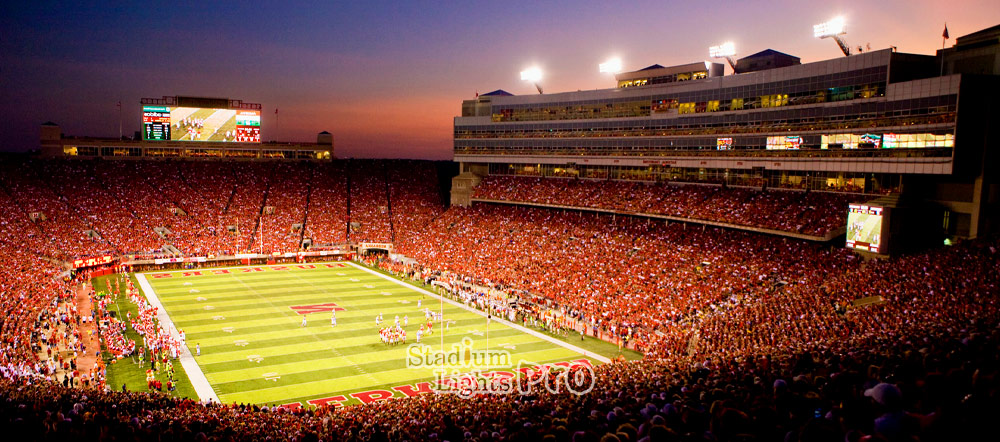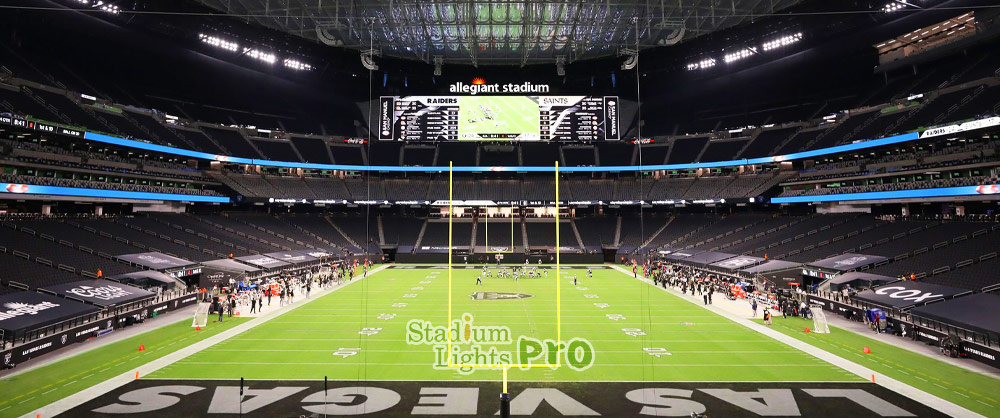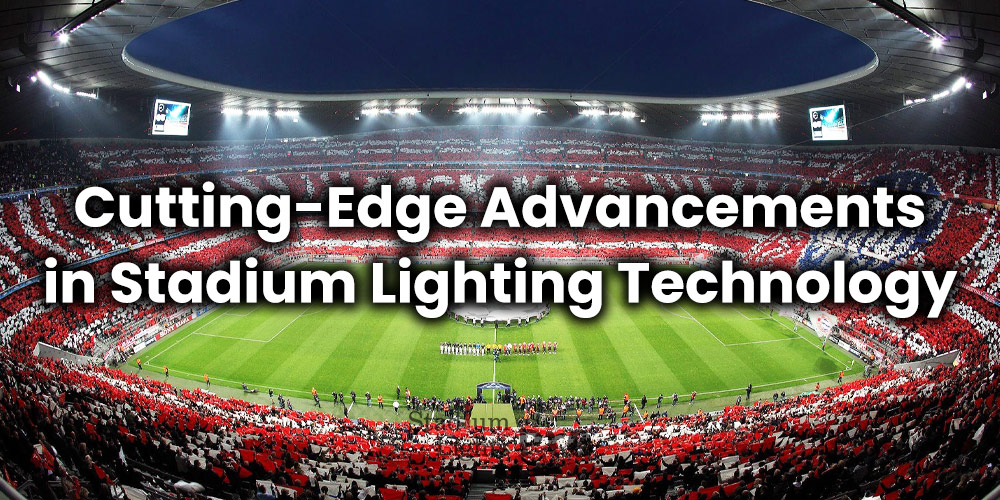Over the years, there has been a remarkable evolution in lighting technology, with a shift towards more energy-efficient, versatile, and dynamic solutions. This article explores the cutting-edge advancements in stadium lighting technology, focusing on LED lighting, advanced lighting control systems, LED lenses, heat dissipation systems, power supply innovations, and more.
Table of Contents
ToggleLED lighting: A revolution in efficiency and flexibility
One of the most significant advancements in stadium lighting technology is the widespread adoption of Light Emitting Diode (LED) lighting systems. LED lighting has revolutionized the industry by offering unparalleled energy efficiency, long lifespans, and exceptional brightness. Unlike traditional lighting sources such as metal halide or incandescent lamps, LEDs consume significantly less energy while producing higher lumen output, translating to better illumination on the playing field.
LED lighting systems also offer superior color rendering capabilities, enabling spectators to experience more vibrant and accurate colors. This is vital in sports where differentiating team colors and accurately perceiving the action on the field are crucial.
Moreover, LEDs are incredibly versatile and can be programmed to change colors and intensities dynamically, allowing for creative light shows, thematic displays, and even integration with the emotions of the game. This level of customization enhances the overall spectator experience, making events more memorable and immersive.
Advanced lighting control systems: Precision at your fingertips

In tandem with the ascent of LED lighting, we are witnessing the evolution of sophisticated lighting control systems. These innovative systems provide stadium managers with a remarkable degree of precision in tailoring lighting environments to meet precise demands. This encompasses the ability to finely calibrate brightness levels, color temperatures, and even lighting angles to suit specific needs.
One of the key enablers of this technological leap is the integration of wireless control interfaces. This advancement has revolutionized the management of stadium lighting by centralizing control in a seamless and user-friendly manner. From a single location, operators can wield comprehensive authority over the lighting setup, making real-time adjustments with ease and precision.
This heightened level of control contributes significantly to the quest for energy efficiency. With the capability to dim or entirely switch off lights when they are not required, stadium managers can curtail energy consumption substantially. This smart approach minimizes wastage, ensuring that illumination aligns precisely with the activity on the field or the event stage.
Furthermore, the agility granted by these advanced lighting control systems extends beyond energy savings. The ability to instantaneously adapt lighting conditions to changing scenarios enhances the overall experience for both athletes and spectators. During intense moments of gameplay, lights can be intensified to amplify the excitement. Conversely, during breaks or less demanding segments, they can be subtly dimmed to maintain a comfortable ambiance.
LED lens technology: Directing light with precision

The potency of LED lighting gains an additional edge through the integration of state-of-the-art lens technology. These advanced LED lenses are meticulously engineered to refine the distribution of light, orchestrating illumination to target specific areas with exactitude. This level of precision proves indispensable in environments such as stadiums, where achieving consistent and uniform lighting across the entirety of the playing field is paramount.
The finesse of these lenses lies in their capacity to govern the trajectory of light beams. By effectively controlling the angle at which light radiates, they facilitate an optimal spread of luminance. This meticulous control minimizes the occurrence of glare and the wasteful scattering of light, ensuring that the emitted radiance remains focused on the intended surfaces.
Crucially, the outcome of this precision is twofold: an environment that optimally caters to the needs of athletes and spectators alike. Athletes benefit from the absence of glare, a factor that can considerably impact their performance. By mitigating glare, the lenses empower athletes to concentrate wholly on their game without the disruption caused by excessive brightness.
For spectators, the advantages are equally pronounced. The thoughtful design of these lenses translates to a crystal-clear view of the proceedings. The reduction of light spillage means that the audience can engage in the event without being subjected to blinding flashes of light. As a result, the overall experience for those in the stands becomes all the more immersive and enjoyable.
Heat dissipation: Keeping things cool under pressure
While LEDs are renowned for their exceptional energy efficiency, they are not exempt from generating heat as they operate. The repercussions of overheating are significant, as they can lead to compromised performance and a curtailed lifespan. Recognizing this challenge, contemporary stadium lighting systems have ingeniously integrated sophisticated heat dissipation solutions.
The vanguard of these solutions lies in the utilization of innovative heat sinks and cutting-edge thermal management techniques. These elements are seamlessly woven into the very design of LED fixtures, working in unison to proficiently manage and disperse heat. By swiftly diverting generated heat away from critical components, these mechanisms uphold the delicate balance of optimal operating temperatures.
This strategic approach bears a dual benefit. Firstly, it safeguards the luminous efficacy and consistent performance of the LED fixtures. Overheating can be detrimental, causing LEDs to function at less than their peak potential. Through the adept management of heat, these lighting systems retain their efficiency, ensuring that the quality of illumination remains unwavering throughout extended periods of operation.
Secondly, and perhaps just as crucially, the implementation of these heat dissipation solutions significantly contributes to the longevity of the lighting system. Heat is a notorious factor that can expedite wear and tear on electronic components. By effectively preventing the buildup of excessive heat, the lighting system enjoys a prolonged operational life, ultimately optimizing the return on investment for stadium operators.
Power supply innovations: Enhancing reliability
The backbone of seamless stadium operations rests upon a dependable power supply. The evolution of power supply technology has ushered in a new era of sturdy and resilient solutions, uniquely equipped to manage the rigorous demands posed by modern stadium lighting systems.
Among these pioneering solutions, battery backup systems, surge protection, and intelligent power distribution have risen to prominence. These innovations converge to fortify the reliability of the system, creating an intricate web of safeguards that shield against a spectrum of potential disruptions.
Battery backup systems are at the forefront of this technological security net. They stand ready to swiftly assume control should a power outage occur. By seamlessly transitioning to stored power, these systems ensure that stadium activities proceed without interruption, averting any potentially chaotic scenarios.
Surge protection is another integral element that secures the system’s integrity. In the face of sudden voltage spikes, which can result from factors such as lightning strikes or electrical faults, surge protection mechanisms divert excess energy away from sensitive components, preventing irreparable damage.
The concept of intelligent power distribution further underscores the sophistication of these systems. Through real-time monitoring and precise allocation of energy resources, this technology minimizes strain on the system during peak demand periods. This not only maintains operational stability but also conserves energy, aligning with contemporary sustainability imperatives.
In unison, these innovative solutions form a robust defense against unforeseen electrical adversities. Power outages, voltage fluctuations, and other potential disruptions are effectively neutralized, allowing stadium managers to ensure uninterrupted events and maintain an unparalleled experience for both participants and spectators.
Sustainability and environmental considerations
In step with society’s heightened focus on sustainability, the arena of stadium lighting technology has seamlessly aligned itself with this imperative. LED lighting, at the forefront of this revolution, stands as a testament to this commitment. Its extraordinary energy efficiency has the power to substantially curtail power consumption and subsequently, the emission of greenhouse gases. This translates into a notable reduction in the carbon footprint of stadiums, a stride towards a greener future.
Beyond the realm of energy conservation, LED fixtures usher in an era of prolonged utility. Their extended operational lifespan tackles the issue of waste head-on, alleviating the burden associated with frequent lamp replacements. This longevity not only optimizes resource utilization but also diminishes the disposal of discarded lighting components, fostering a more sustainable waste management framework.
However, the drive towards environmental stewardship extends beyond LED technology itself. Advanced lighting control systems and sensors emerge as pivotal agents in the pursuit of energy efficiency. By permitting lights to be activated exclusively when required, these systems orchestrate a judicious consumption of energy resources. This dynamic approach is in perfect alignment with the overarching ambition to reduce energy waste and ultimately mitigate the ecological impact of stadium operations.
The future of stadium lighting
The trajectory of stadium lighting technology continues to be one of innovation and advancement. As research and development in materials science, optics, and electronics progress, we can expect even more sophisticated solutions on the horizon.
From enhanced integration with augmented reality to improved adaptive lighting that responds to changing weather conditions, the future promises an increasingly immersive and captivating stadium experience for both athletes and spectators alike.
Embracing the future: The shift from metal halide to LED stadium lights
In recent years, a remarkable transformation has been underway in the world of stadium lighting technology. A notable trend has emerged where traditional metal halide lights are being rapidly replaced by the LED stadium lights. This transition is driven by a multitude of compelling reasons that span from enhanced performance and cost savings to environmental considerations. Let’s delve into the factors fueling this shift and explore why LED stadium lights are becoming the preferred choice for sports and entertainment venues.
Unrivaled energy efficiency
At the forefront of the transition is LED lighting’s exceptional energy efficiency. Metal halide lights, while once considered the standard for stadium illumination, are notorious for their energy consumption. In contrast, LED stadium lights utilize significantly less energy while providing higher lumen output, resulting in brighter and more evenly lit playing fields. This efficiency not only reduces operational costs but also aligns with the global push for energy conservation.
Prolonged lifespan
One of the most compelling reasons for replacing metal halide lights with LEDs is their extended lifespan. Metal halide lights often require frequent replacements due to their relatively short operational life. In contrast, LED stadium lights can last up to 150,000 hours or more, drastically reducing maintenance expenses and the inconvenience of frequent bulb changes.
Enhanced lighting quality
LEDs excel in producing high-quality light that closely resembles natural daylight. This quality is essential for athletes performing on the field and spectators enjoying the action. LED stadium lights offer superior color rendering capabilities, ensuring that team colors are accurately represented and that every detail on the field is visible. This heightened visual experience contributes to the overall enjoyment of the event.
Customization and dynamic control
LED stadium lights provide unparalleled flexibility in lighting design. With advanced control systems, operators can dynamically adjust brightness levels, color temperatures, and even create captivating light shows. This dynamic lighting capability enhances the spectator experience by allowing for creative displays that can match the excitement of the game or event.
Reduced heat emission
Metal halide lights emit a significant amount of heat during operation, leading to uncomfortable playing conditions for athletes and requiring complex cooling systems. LED stadium lights produce significantly less heat, creating a more comfortable environment for both players and spectators. Furthermore, the reduced heat emission contributes to the longevity of the lighting system and reduces strain on cooling mechanisms.
Cost savings over time
While the initial investment in LED stadium lights may be higher, the long-term cost savings are significant. The combination of lower energy consumption, reduced maintenance needs, and longer lifespans results in a compelling return on investment over the years. This financial advantage is particularly appealing to stadium operators and managers seeking to optimize their budgets.
Conclusion
Cutting-edge advancements in stadium lighting technology, such as LED lighting, advanced control systems, lens technology, heat dissipation solutions, power supply innovations, and a commitment to sustainability, are reshaping the landscape of sports and entertainment. These innovations not only elevate the quality of events but also contribute to energy efficiency and environmental responsibility, setting a new standard for stadium lighting excellence.
If you’re seeking additional updates on cutting-edge LED lighting systems or require assistance with free stadium lighting design, please feel comfortable reaching out to us. We’re committed to providing you with the latest news and valuable services in the realm of advanced lighting technology.

